
|

|
Mausoleums
Mausoleums are the grandest form of interment found in London's Victorian
cemeteries. Most examples consist of a small above ground chapel like structure, which may contain a small alter and other
biblical representations. In many Mausoleums the coffins are interred in a brick lined vault set in the floor, which
is covered by a stone slab or in some cases a large iron plate.
Other Mausoleums house the coffins above ground, in this type there are
normally stone shelves set into the walls on which the coffins are placed. Often the doors on such Mausoleums have some form
of window or iron grill which allows the coffins to be easily viewed from the outside, unlike today's society the Victorians
took great comfort in being able to see their loved ones coffins, if for no other reason then to be reassured that they were
still there.
Tombs
The typical English tomb consists of an above ground monument underneath of which
there is an underground (or at least partially underground) chamber. At the front or back can be found steps leading down
to stone but more often cast iron doors.
The tomb itself is often just a bare brick lined chamber with the coffins placed
either directly on the floor or raised up on wooden blocks to allow the circulation of air which helps preservation.
Catacombs
Catacombs typically take the form of an underground network of corridors lined
from floor to ceiling with individual single coffin vaults (loculi). There are of course variations of this arrangement, for
example the Anglican Chapel Catacomb at Kensal Green Cemetery also has large family vaults which can house multiple coffins.
The majority of Catacombs were built underneath the cemeteries chapels, this
allowed for the easy transition of the coffin via a Catafalque (hydraulic lift) from the funeral service in the chapel to
the final resting place in the Catacomb below.
Other Catacombs were independent from the Chapels, these were often
built under structures called Colonnades, an excellent example of this
can be seen at Brompton Cemetery.
Despite the number of Catacombs built they never really proved popular with the
Victorians, Kensal Green Cemetery still have around a thousand places available ranging in price from £600 to £900. But before
you go booking your slot please remember the law requires the use of a triple sealed coffin which will set you back around
£1700.
Brick Lined Grave
The Brick Lined grave became popular long before the building of the great cemeteries.
It served two basic functions, the first was as a more humble form of status symbol and the second was as a means of protection
against being dug up in the overcrowded pre-Victorian Churchyard.
The grave itself consisted of a 13ft deep, brick lined vault, capped off with
a stone slab which in most cases had some form of monument placed atop.
In the event of another death in the family the monument and capping stone could
be removed, the new coffin placed on top of the existing one and then the grave re-sealed. In this way one grave could
contain anything up to eight individuals.
Earth Graves
Finally we arrive at the most humble method of interment and to this day
the most popular. Normally dug to a depth of around 6.5 foot (but sometimes on request 8`or deeper) the earth grave can accommodate
(by today's regulations) two coffins, which allows for a 10 cm layer of earth between coffins and a 3 foot layer
between the top coffin lid and ground level.
Cremation
The first official cremation in the UK took place
on 26th March 1885, but it wasn't until nearly a century later that cremation became popular and overtook traditional
burial as a means of disposing of the dead. Today Cremation is pushed as being environmentally friendly primarily due to the
space saving aspects of an urn over a coffin but in reality the gas consumption and resultant fumes tip the balance in favour
of burial in terms of being 'green'.
Once the deceased has been cremated and their bones
ground into the fine powder known as ashes the methods of disposal are many and varied. One method which can be seen in the
photo on the right, is the Columbarium which is basically a Catacomb for cremains. Other methods include a burial in a small
plot or the scattering of the ashes in a place held special to the deceased.
|

|

|

|

|

|
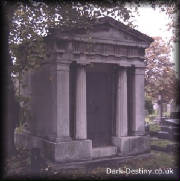
|
| Mausoleum |
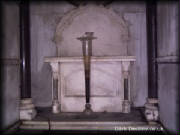
|
| The Alter inside a Mausoleum |
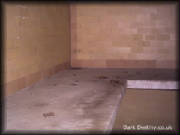
|
| Empty mausoleum showing shelves |
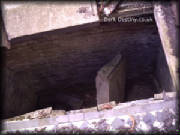
|
| A collapsed roof on this Mausoleum has left the Vault exposed |
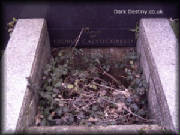
|
| An overgrown and sealed entrance to a tomb |

|
| Kensal Greens Anglican Chapel with the main Catacombs below |
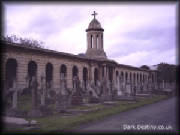
|
| The Brompton Colonnades |
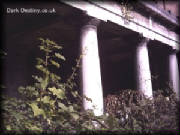
|
| Overgrown Colonnades at Kensal Green |
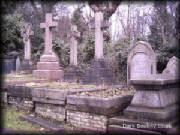
|
| Brick lined graves at Highgate |
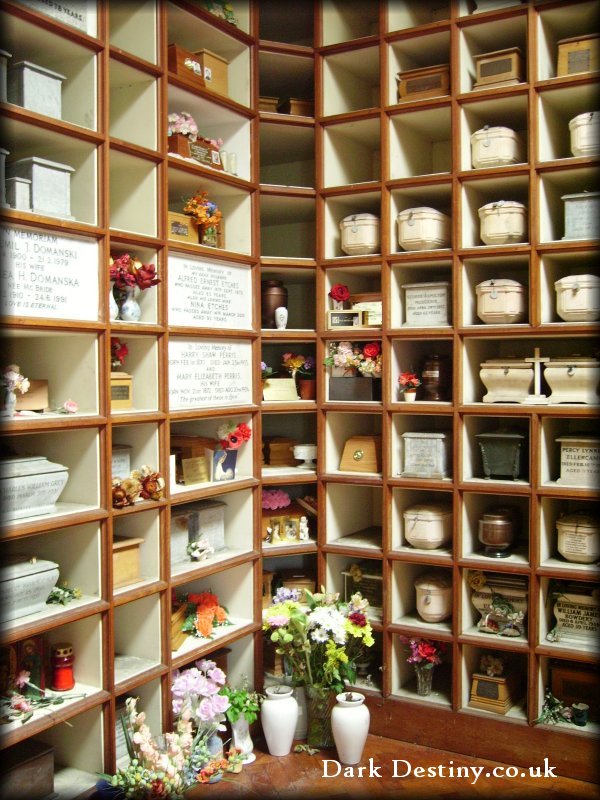
|
| Inside a Columbarium |
|

|

|

